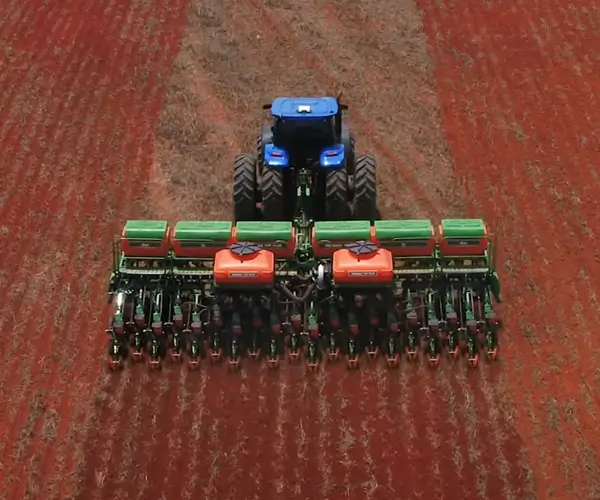part 1:
Unlocking Precision in Modern Vehicles: The Power Behind Steering Gear Systems Using DC Electric Motors

In the ever-evolving landscape of automotive engineering, steering systems stand as a testament to human ingenuity—constantly innovating to deliver safer, more responsive, and energy-efficient vehicles. At the heart of many contemporary steering mechanisms lies an unsung hero: the DC electric motor, which has revolutionized how drivers experience control and comfort.
The Evolution of Steering Systems
Traditional steering systems, such as the manual rack-and-pinion, have served vehicles for decades. While effective, they often require considerable effort from the driver, especially at lower speeds or during tight maneuvers. Hydraulic power steering (HPS) emerged as a solution, using pressurized fluid to assist steering effort. However, HPS systems come with their own drawbacks: they are energy-dependent, complex, and demand regular maintenance.
Enter electric power steering (EPS)—a game-changing innovation driven by the integration of electrical and mechanical technology. Central to EPS is the steering gear system powered by a DC electric motor, which offers a blend of responsiveness, efficiency, and adaptability impossible to match with hydraulic counterparts.
Why DC Electric Motors?
DC electric motors are prized for their simplicity, reliability, and precise controllability. Unlike other motor types, DC motors can be easily controlled in terms of speed and torque through well-understood electronic circuits, making them perfect for dynamic applications like vehicle steering.
In a typical steering gear system, the DC motor functions as an actuator—receiving signals from the driver’s steering wheel through a steering angle sensor—a beam of real-time data that indicates the driver’s intention. The motor then converts this control signal into rotational movement, which assists steering, making it easier for the driver to maneuver the vehicle.
The Mechanics of a DC Motor in Steering Systems
Focusing on the core mechanics, a DC motor in a steering gear system typically consists of a rotor (armature), magnets (stator), brushes, and a commutator. When electrical current flows through the armature windings, it creates a magnetic field that interacts with the field magnets, causing the rotor to turn.
Modern electric steering gear systems incorporate sensors and control units that constantly monitor the vehicle's speed, steering torque, and driver input. The control module then modulates the voltage supplied to the DC motor, effectively fine-tuning the amount of assist required at any given moment. This real-time adjustment results in smarter steering assistance—more at low speeds for easier parking, and less at higher speeds for stability.
Advantages of Using a DC Electric Motor in Steering
The integration of DC electric motors into steering gear systems offers numerous benefits:
Enhanced Fuel Efficiency: Because EPS systems only draw power when assistance is needed, they consume significantly less energy compared to hydraulic systems, which are driven by engine-powered pumps constantly running.
Increased Safety: Electric steering systems can be programmed for various driver-assistance features, such as lane-keeping assist and automatic parking, which rely on precise servo control facilitated by DC motors.
Compact and Lightweight Design: Electric motors are smaller and lighter compared to hydraulic components, freeing up space and reducing overall vehicle weight—key factors in modern automotive design.
Reduced Maintenance: Unlike hydraulic systems that require fluid replacement and are prone to leaks, electric systems are cleaner and require less upkeep.
Improved Responsiveness and Customization: Vehicle manufacturers can easily tweak steering feedback, effort, and response characteristics through software, offering a customizable driving experience.
The Role of Control Electronics
Underlying the physical movement of the DC motor is an advanced electronic control system—often a dedicated motor controller or ECU—managing voltage and current, optimizing performance and safety. These control modules interpret inputs from steering sensors, vehicle speed sensors, and driver commands, providing seamless assistance.
Furthermore, the advent of autonomous driving features has expanded the importance of precise and programmable steering assistance. DC electric motors are inherently compatible with such systems, enabling innovations like lane centering, automatic steering corrections, and even fully autonomous control in future vehicles.
Challenges and Considerations
While the advantages are compelling, integrating DC motors into steering gear systems is not without challenges. Factors such as motor heating, electromagnetic interference, and durability under harsh conditions must be carefully managed. Engineers design robust insulation, thermal management systems, and shielding to ensure longevity and reliability.
Additionally, failure modes must be anticipated. Redundant systems and fail-safe protocols are embedded to ensure that in the rare event of a motor malfunction, the driver can still maintain control—sometimes by switching to a manual mode or employing backup sensors and controls.
Looking Forward
The utilization of DC electric motors in steering gear systems is set to grow even more in the coming years. With ongoing advances in motor technology—such as brushless DC motors offering higher efficiency and lower maintenance—and smarter control algorithms, future vehicles will likely feature even more intuitive and responsive steering assistance.
As vehicle electrification and autonomous driving continue to accelerate, the humble DC electric motor’s role in steering systems exemplifies a broader shift towards smarter, safer, and more sustainable automotive technologies. It’s a perfect example of how a small but mighty component can transform the driving experience fundamentally.
Leveraging innovations in modular drive technology, Kpower integrates high-performance motors, precision reducers, and multi-protocol control systems to provide efficient and customized smart drive system solutions.




































